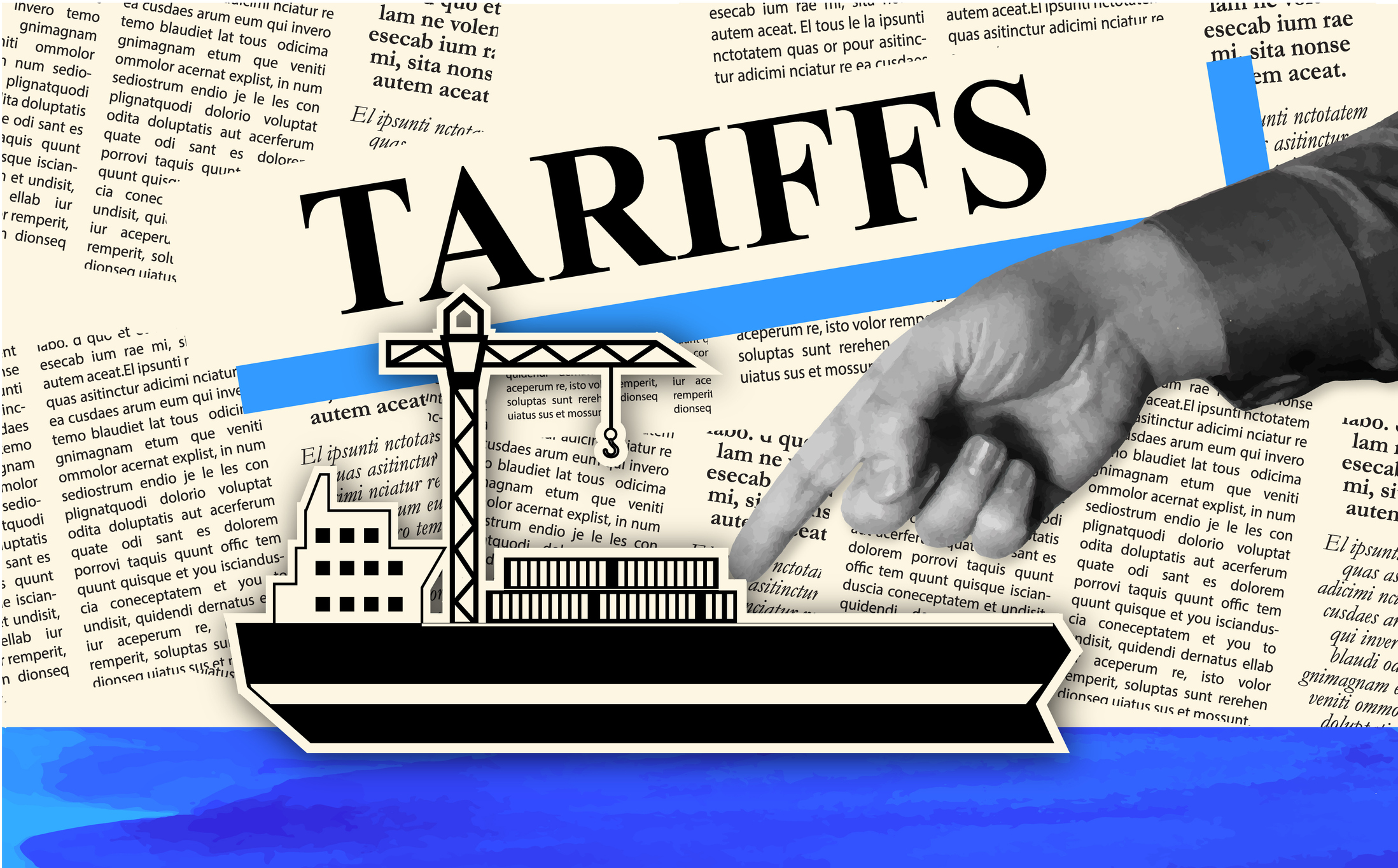The world is witnessing a new kind of economic transformation—one powered by carbon reduction targets rather than fossil fuels. At the heart of this shift is the European Union, which through its European Green Deal, seeks to become the world’s first carbon-neutral continent by 2050. This ambitious goal is being driven by an aggressive legislative framework known as Fit for 55, which aims to reduce greenhouse gas emissions by at least 55% by 2030 compared to 1990 levels. Explore how the EU’s climate package—including CBAM and Fit for 55—is creating de -facto green tariffs, affecting raw material sourcing, heavy industry competitiveness, and markets in developing economies
Among the centerpiece policies of this framework are the EU Emissions Trading System (ETS) and the Carbon Border Adjustment Mechanism (CBAM). These tools are no longer just climate policies; they are powerful economic levers that are reshaping international trade and recalibrating the terms of global industrial competition.
This blog explores the rise of “green tariffs,” their impact on global supply chains, raw material sourcing, energy-intensive industries, and developing countries. With growing debate over whether these policies protect the planet or disguise protectionism, it is clear that CBAM is about more than emissions—it’s about influence, strategy, and global economic realignment.
The Green Tariffs Policy Pillars: CBAM and Fit for 55
The Carbon Border Adjustment Mechanism (CBAM) is the EU’s tool to prevent what it calls “carbon leakage.” This refers to the risk that EU companies could relocate production to countries with less stringent climate policies, or that European markets could be flooded with cheaper, more carbon-intensive imports. To mitigate this, CBAM will tax imports of carbon-intensive products like steel, aluminum, cement, fertilizer, electricity, and hydrogen.
Starting from 2026, importers will have to purchase CBAM certificates, priced according to the carbon content of their goods and aligned with the EU’s internal carbon price. Until then, they are required to report emissions under a transitional period running from 2023 to 2025.
Fit for 55: The Overarching Ambition
“Fit for 55” is more than just a catchy slogan. It is a sweeping package of measures that includes:
- Reforms to the EU ETS to phase out free emissions allowances.
- Sector-specific targets for buildings, transport, and agriculture.
- Incentives for renewable energy and energy efficiency.
- Strict emissions standards for vehicles.
These policies aim not only to reduce emissions, but to reposition Europe as a leader in clean technologies, circular economy models, and green innovation.
Raw Materials and Global Sourcing Disruption
The impact of these policies on raw material sourcing cannot be overstated. CBAM has introduced a de facto requirement for cleaner inputs, effectively penalizing suppliers who rely on coal-heavy or outdated manufacturing processes.
Real-world impact:
- Steel and Aluminum: These metals account for approximately 12% of global CO2 emissions. With CBAM, exporters from high-emission countries like China, India, and Russia will face increasing barriers unless they shift to lower-carbon technologies such as electric arc furnaces.
- Fertilizers: With natural gas prices and emissions intensity in focus, the CBAM is pushing the agriculture and chemical sectors to look for greener inputs or risk significant price hikes.
- Cement: Heavily coal-reliant in many countries, cement imports are under scrutiny. In the Middle East and Asia, exporters are exploring carbon capture and usage technologies to stay competitive.
Suppliers to the EU are now prioritizing emissions transparency, investing in greener production techniques, and seeking certifications that allow them to bypass or reduce CBAM charges.
Energy-Intensive Industries: Between Compliance and Competitiveness
In Europe:
European manufacturers, especially in energy-heavy sectors, are seeing a rapid shift in cost structures. As free allowances under the EU ETS are phased out, domestic industries must either invest in cleaner technologies or absorb higher costs.
While CBAM offers a buffer by leveling the playing field with importers, the transition is not painless:
- The European steel industry is investing billions into green hydrogen and low-carbon furnaces.
- Aluminum producers are seeking power purchase agreements (PPAs) with renewable energy suppliers.
- Chemical industries are lobbying for additional support during the green transition.
Outside Europe:
Foreign exporters face a stark choice:
- Adapt to EU carbon accounting standards and reduce emissions.
- Absorb the cost of CBAM certificates.
- Lose market access.
Countries like Thailand are leading by example, with major investments in green steel plants that run on renewable electricity.
The Challenge for Developing Nations
For developing economies, CBAM represents a paradox: it offers a path to cleaner growth but also threatens immediate economic harm.
Points of friction:
- India, a major exporter of steel and aluminum to the EU, has called CBAM an “unjust and unilateral trade barrier.”
- Africa and South America worry that CBAM could restrict their access to European markets, especially for goods like fertilizers, cement, and agri-inputs.
Practical hurdles:
- Lack of standardized emissions tracking systems.
- High cost of green technology and certification.
- Limited technical capacity to engage in EU-level compliance.
CBAM also provides a clear incentive for long-term investment in green technologies, provided there is international support. The EU has discussed the potential to reinvest CBAM revenue into global climate finance, but a firm mechanism is yet to be established.
Legal, Economic, and Diplomatic Fallout
Trade Law and WTO
CBAM’s compatibility with WTO rules is under scrutiny. While the EU argues it is a non-discriminatory tool aligned with its internal carbon pricing system, others view it as an extraterritorial tax that violates the principle of equal treatment.
- Countries like China, India, and South Africa are considering challenging CBAM at the WTO.
- Retaliatory tariffs or carbon measures could follow, creating trade fragmentation.
- The rise of “carbon clubs”, where countries with aligned climate goals coordinate carbon pricing, could reshape alliances.
| Metric | Value |
|---|---|
| CBAM-covered global trade | 0.37% |
| Share of EU imports impacted | 3% |
| Global CO₂ affected (2022) | 0.31% |
| Expected annual CBAM revenue | ~€14.7 billion |
| ETS carbon price (2024) | €80+ per ton |
Real-World Examples of Adaptation
- Meranti Green Steel (Thailand): A €2 billion investment in green steel targeting EU exports.
- India: Launching carbon markets and hydrogen investments to mitigate CBAM risks.
- Ugandan agriculture: More than 900,000 farmers are adjusting to new EU deforestation traceability rules under the EUDR, a CBAM-adjacent regulation.
These cases show both the challenges and dynamism of global industry responding to EU climate policy.
Long-Term Outlook: A Green Tariffs Order in Global Trade
As CBAM matures, its scope will likely expand to other sectors. The EU could soon cover chemicals, plastics, and even consumer goods. With free allowances ending in 2034, all exporters to the EU will face the same carbon costs as domestic producers.
CBAM is not the end of globalization—but it is globalization reimagined through a climate lens.
The EU is setting a precedent. The UK, Canada, and even the U.S. are exploring similar mechanisms. As the world faces compounding climate crises, economic resilience may soon depend not just on cost-efficiency, but on climate compatibility.
Conclusion:
The EU’s climate strategy is bold, and CBAM is just the beginning. These green tariffs are more than fees; they are filters that separate the sustainable from the outdated. They reward innovation and punish inertia.
For businesses, this means retooling supply chains, auditing emissions, and investing in green infrastructure. For governments, it demands diplomacy, domestic carbon pricing, and support for local industries.
Mattias Knutsson, a leading voice in global procurement and sustainability, recently observed:
“In a world reshaped by mechanisms like CBAM, success won’t be determined by cost alone but by transparency, adaptability, and shared ownership in procurement chains.”
The race is no longer just for profit, but for relevance in a world where climate credentials are currency. The EU has lit the path; the rest of the world must now choose whether to follow, adapt, or fall behind.
By integrating warm, people-focused policymaking with hard numbers and structural reform, the EU has placed climate at the heart of the global trade system. The question now is whether this climate-conscious trade model can be both green and just.
More related posts:





